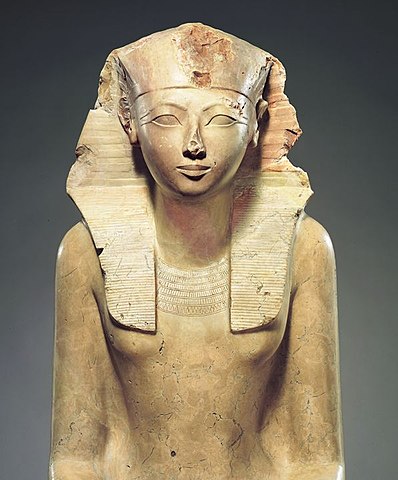The Reign of Hatshepsut: Exploring the Achievements of Egypt’s Female Ruler
1. Ascension to the Throne:
- Historical Precedent: Hatshepsut became one of the few female pharaohs of ancient Egypt, ascending to the throne around 1473 BCE. Her reign marked a departure from traditional male rulership.

2. Architectural Marvels:
- Deir el-Bahari: Hatshepsut is renowned for her architectural projects, including the construction of the Mortuary Temple of Hatshepsut at Deir el-Bahari. The temple’s design and structure are considered masterpieces of ancient Egyptian architecture.
3. The Red Chapel:
- Religious Construction: Another notable architectural achievement was the construction of the Red Chapel at Karnak, dedicated to the god Amun. The chapel served both religious and ceremonial purposes.
4. Trade and Expeditions:
- Punt Expedition: Hatshepsut initiated the famous Punt expedition, a trading mission to the land of Punt, which is believed to be in the region of modern-day Somalia or Eritrea. The expedition brought back valuable goods, including exotic plants and animals.
5. Economic Prosperity:
- Wealth and Resources: Hatshepsut’s reign is associated with economic prosperity, fueled in part by trade and successful expeditions. The acquisition of resources contributed to the overall wealth of Egypt during this period.
6. Cultural Contributions:
- Promotion of Arts: Hatshepsut supported the arts and cultural endeavors. Her reign is associated with a flourishing of artistic expression, including the creation of statues, reliefs, and other artistic representations.
7. Female Pharaoh Representation:
- Visual Representation: Hatshepsut’s representation as a female pharaoh is notable in the artistic depictions of her reign. She is often portrayed wearing traditional male pharaonic regalia, emphasizing her authority and legitimacy.
8. Mortuary Complex at Deir el-Bahari:
- Innovative Design: The Mortuary Temple of Hatshepsut at Deir el-Bahari is distinguished by its unique architecture, including terraced colonnades and a three-tiered structure. It stands as a testament to her innovative approach to temple construction.
9. Obelisks and Statues:
- Monumental Statuary: Hatshepsut commissioned numerous statues and obelisks, including the famous obelisks at Karnak. These monuments celebrated her rule and showcased her devotion to the gods.









